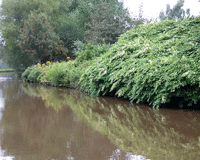
Speeding up broadband delivery
Until now, business tenants have faced long negotiations with providers to agree new wayleaves from scratch each time they wanted to get broadband fibre installed.
This cost all parties involved time and money and some businesses have even been forced to occupy new office, retail and leisure space with no access to broadband owing to the time taken to agree wayleaves, significantly affecting their business operation.
The solution
Working with the City of London Law Society’s Land Law Committee and the British Standards Institute, the City of London Corporation launched a standardised wayleave and toolkit, including guidance notes, at the start of August 2016. The new toolkit is the result of detailed negotiations between London’s main developers, landlords, broadband operators, property managers, government, law firms and key trade associations.
The consensus reached among all those parties involved in the project means the City’s toolkit should be widely used and it is hoped that it will be adopted across England and Wales. The toolkit will be promoted in all major commercial property developments through London borough planning policy. Brookfield & Oxford Properties intends to be among the first to use it at its 500,000 sq ft landmark development at London Wall Place.
The backing of the Department for Culture, Media & Sport and the mayor of London was warmly welcomed by City of London Corporation policy chairman Mark Boleat. He said: “Broadband is the lifeblood for successful firms, so it is essential they have access to high-speed internet when they move in. Any efforts which reduce the time and cost in getting superfast broadband in the capital are a welcome step. It has been great to see so many interested parties pulling in the same direction to get this legal template agreed.”
The wayleave is recommended by the deputy London mayor for business, the RICS, the chair of London councils, the mayor of London’s Connectivity Rating Scheme, the Broadband Stakeholder Group, the City of London Law Society, London First and the City and Westminster Property Associations, among others.
The toolkit and wayleave can be found here
Alison Hardy is a partner at Squire Patton Boggs (UK) LLP and was part of the drafting team from the CLLS Land Law Committee. Steven Bage is strategic infrastructure advisor and Philip Saunders is parliamentary affairs counsel at the City of London Corporation.
 Asbos for gardens?
Asbos for gardens?
With Japanese knotweed season in full swing, many unlucky home owners are finding the plant appearing in gardens across the country. Due to the damaging nature of Japanese knotweed, owners and landlords may find that thousands of pounds are knocked off the value of their land and properties as a result of its presence. But whose responsibility is it to remove it? Does it lie with the property owner, the landowner or maybe even the developer who carried out the development?
Essentially, it is not an offence to have Japanese knotweed on your land and there is no legal obligation to notify anybody if the plant is found. However, landowners may find themselves on the wrong side of the law if there are no attempts to control, remove or report the presence of Japanese knotweed should it grow into neighbouring land and cause loss and damage. Furthermore, under the Environmental Protection Act 1990, Japanese knotweed is considered to be a “controlled waste” and landowners can face hefty fines if it is not disposed of correctly.
It is also important to note that a recent change in legislation has made it an offence to allow Japanese knotweed to grow within your land ownership if it is not controlled and encroaches upon land other than your own. Landowners who ignored the presence of the plant have in some cases been given an antisocial behaviour order (ASBO) and issued fines of up to £2,500. The Home Office states that individuals, businesses or organisations have a legal responsibility to prevent certain invasive non-native plants or injurious weeds on their premises spreading into the wild. This demonstrates that it is the responsibility of landowners to control and remove Japanese knotweed.
In the case of housing developments, if a home owner can prove that the developer has breached a species control order by failing to undertake any remedial steps in line with the Environmental Protection Act 1990, any costs associated with removal of the plants can be recovered and reimbursed.
However, it can be difficult to identify knotweed when carrying out surveys and land checks prior to building a development, as it can lie dormant for several years. If a developer can prove that it has carried out all of the relevant searches and enquires, it may be able to escape liability if Japanese knotweed is discovered further down the line. The most important consideration for landowners is to ensure they carry out the appropriate checks prior to redevelopment and prior to a purchase. In the event the plant is found to be present, it should be reported and disposed of correctly and within the legal guidelines set out by statute and government guidelines.
Justine Ball is an associate solicitor in the real estate disputes team at Shakespeare Martineau











